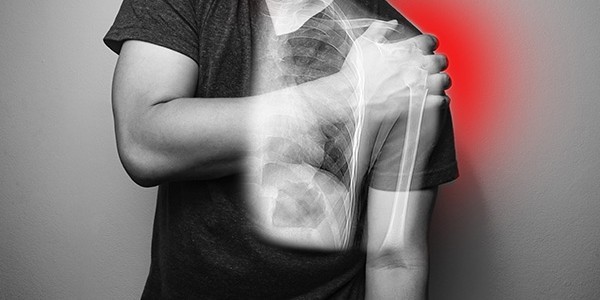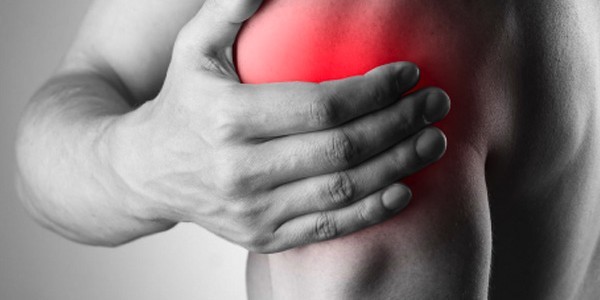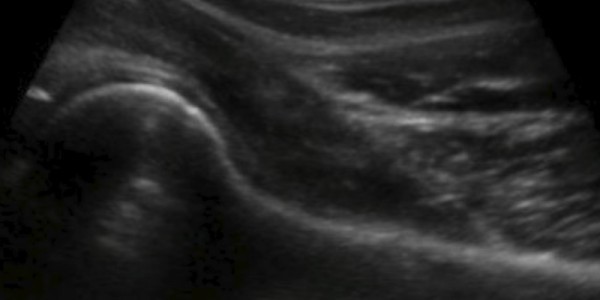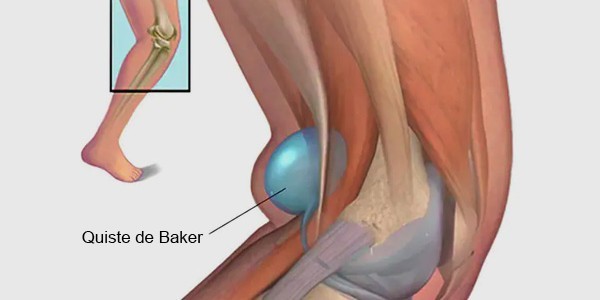![[VIDEO] Ultrasound-Guided Injection for Trigger Finger](https://drjordijimenez.com/imagen/100/100/Imagenes/infiltracion-ecoguidada-dedo-resorte-drjordijimenez.jpg)
- Home /
- TREATMENTS /
- FREQUENTLY ASKED QUESTIONS ABOUT ULTRASOUND-GUIDED INFILTRATION
FREQUENTLY ASKED QUESTIONS ABOUT ULTRASOUND-GUIDED INFILTRATION
1.- What is ultrasound-guided injection?
An ultrasound-guided injection is a procedure in which a medication is injected into an anatomical structure using real-time imaging provided by ultrasound.
2.- What does ultrasound-guided injection mean?
The term ultrasound-guided injection refers to the use of ultrasound to guide the needle that injects the medication to the target anatomical structure.
3.- How many days of rest are needed after an injection?
The general recommendation is 48 hours of joint rest; complete rest is not required.
4.- What side effects can an injection have?
Side effects depend on the medication administered.
In the case of corticosteroids, they can cause temporary increases in blood glucose or blood pressure levels. Local complications may include skin hypopigmentation at the injection site or subcutaneous fat atrophy. The side effects of hyaluronic acid or platelet-rich plasma (PRP) are practically nonexistent.
5.- How painful is an injection?
The pain of ultrasound-guided injections can vary depending on the area to be injected and the anatomical structure being injected. The injections most commonly used in daily practice use a local anesthetic combined with cortisone. The local anesthetic reduces the initial pain within a few seconds of starting the procedure.
6.- How long does it take for the injection to take effect?
Ultrasound-guided injections that use local anesthetic provide almost immediate pain relief, which lasts for several hours, depending on the anesthetic used.
7.- What can be done after an injection?
After an ultrasound-guided injection, active mobilization of the injected limb is permitted, but physical exertion or overloading is not recommended for the first 48 hours.
8.- Where are ultrasound-guided injections administered?
Ultrasound-guided injections are used to treat joint, tendon, muscle, bursa, and other conditions, around nerves, or between the fascia or covering of muscles, among other structures.
9.- What types of ultrasound-guided injections are available?
Ultrasound-guided injections always require the same preparation. The medications administered during injections vary:
- corticosteroids,
- hyaluronic acid,
- platelet-rich plasma (PRP),
- dextrose, or botulinum toxin.
10.- How many hyaluronic acid injections are available in the knees?
There are several types of hyaluronic acid on the market. A few years ago, there were treatments with several injections administered a few weeks apart. Currently, most hyaluronic acid treatments are single injections.
11.- How many days of sick leave are given for an injection?
It depends on the area injected, the medication administered, and the patient's occupation.
12.- How many injections can you receive?
It depends on the medication administered. Cortisone injections are not recommended more than 3 times a year, with a maximum of 4 in the same anatomical structure. The effect of hyaluronic acid usually lasts 7-8 months to 1 year. Platelet-rich plasma (PRP) cycles are usually 3 injections spaced 2-3 weeks apart, depending on the condition being treated.
13.- When is an injection necessary?
Injection is a weapon against pain. It is a treatment that can be considered when treatments such as rest, medication, or physical therapy are ineffective, or as a first course of treatment if the pain is severe.
It is a treatment that provides rapid and generally long-lasting relief if the patient's condition allows it. It allows us to perform physical therapy with less pain, reduce convalescence days, or reduce the need for painkillers.
It can delay prosthetic implantation in young patients or relieve postoperative pain.
14.- What is better, injecting corticosteroids or hyaluronic acid?
One is neither better nor worse than the other. Each medication has its own indication depending on the pathology being treated.
15.- What happens if you are injected with corticosteroids?
Corticosteroids are the most potent anti-inflammatory available; they will likely reduce inflammation and pain.
16.- What should not be done after an ultrasound-guided injection?
After an ultrasound-guided injection, active mobilization of the injected limb is permitted, but physical exertion or overloading is not recommended for the first 48 hours.
17.- What does it feel like after an ultrasound-guided injection?
If the ultrasound-guided injection involves a local anesthetic, numbness in the area is normal, including areas far from the puncture site if the anesthetic has diffused near a nerve. Transient local pain or warmth is normal. A feeling of swelling is also normal.
18.- What doctor performs ultrasound-guided injections?
Ultrasound-guided injections can be performed by any physician with experience in ultrasound and ultrasound-guided interventional techniques.
19.- What injections are covered by Social Security?
Social Security covers all injection treatments currently performed.
20.- What should I do before an ultrasound-guided injection?
Generally speaking, there is no prior preparation for an ultrasound-guided injection. For PRP injections, a fat-free diet is recommended 24 hours before the blood draw and avoiding alcohol for 48 hours before the injection. It is also recommended not to use NSAIDs (nonsteroidal anti-inflammatory drugs) two weeks before the procedure and one week after.
On the other hand, there are some injection procedures performed in the operating room that require preparation. If in doubt, ALWAYS ASK your doctor.
21.- How long does the pain last after an injection?
There may be local discomfort during the first 24-48 hours.
22.- What should I take for injection pain?
In the case of ultrasound-guided injections of corticosteroids or hyaluronic acid, analgesics such as paracetamol, metamizole, tramadol, or NSAIDs can be used. In the case of injections with PRP, NSAIDs should be avoided, as previously mentioned.
Make an appointment with Dr. Jordi Jiménez. He'll see you in the center of Palma and help you regain your quality of life.
RELATED NEWS
[VIDEO] Ultrasound-Guided Injection for Trigger Finger
Trigger finger is a medical condition in which a finger gets stuck or locked in a bent position and then releases with a characteristic “click.” The condition can be painful and affect a person's ability to move the affected finger. It is more co...
[VIDEO] Ultrasound-guided infiltration of the lumbar facets
This video shows a ultrasound-guided injection of a right L4-L5 lumbar facet. Low back pain is one of the main reasons for medical consultation and work absence in our country. It is often multifactorial, with origins in different structures: muscula...
[VIDEO] Ultrasound-guided infiltration of the hip joint
This video demonstrates an ultrasound-guided hip joint injection, used for the diagnostic and therapeutic management of hip pain. Under real-time ultrasound guidance, the needle is precisely placed in the joint to deliver medication such as local ane...
[VIDEO] Ultrasound-guided infiltration of the proximal sacroiliac joint
This video shows an ultrasound-guided injection of the proximal sacroiliac joint, a procedure used in the diagnostic and therapeutic approach to sacroiliac pain. Under real-time ultrasound guidance, the posterior joint space is precisely accessed to...
[VIDEO] Ultrasound-Guided Interfascial Hydrodissection Middle Trapezius - Rhomboids
Ultrasound-guided interfascial hydrodissection is a minimally invasive technique that involves injecting solution to separate fascial planes, relieve muscle tension, and improve mobility. In this case, it is performed on the Middle Trapezius and Rhom...
[VIDEO] Ultrasound-guided infiltration of De Quervain's tenosynovitis
De Quervain's tenosynovitis is an inflammatory condition affecting the tendons at the base of the thumb in the wrist (Abductor Pollicis Longus [AL] and Extensor Pollicis Brevis [EC], specifically in the first extensor compartment). The affected t...
[VIDEO] Ultrasound-guided infiltration of the acromioclavicular joint
Ultrasound-guided infiltration of the acromioclavicular joint is an interventional procedure that, through ultrasound guidance, allows the administration of analgesic and anti-inflammatory medication directly into the shoulder joint. This joint, form...
[VIDEO] Ultrasound-guided injection for rhizarthrosis
Thumb osteoarthritis is a degenerative disease of the trapeziometacarpal joint. As the severity increases, deformity, pain, and loss of function also increase. Rehabilitation plays an important role in pain control and functional improvement, but whe...
Ultrasound-guided glenohumeral infiltration
What is Ultrasound-Guided Glenohumeral Joint Infiltration? Ultrasound-guided injection of the glenohumeral joint is an interventional procedure that uses ultrasound guidance to infuse analgesic and anti-inflammatory medication into the glenohumeral j...
Ultrasound-guided acromioclavicular infiltration
What is Ultrasound-Guided Acromioclavicular Injection? Ultrasound-guided acromioclavicular injection is an interventional procedure that uses ultrasound guidance to inject analgesic and anti-inflammatory medication into the acromioclavicular joint of...
Ultrasound-guided infiltration of the long head of the biceps
What is Ultrasound-Guided Infiltration of the Long Head of the Biceps? Ultrasound-guided infiltration of the long head of the biceps is an interventional procedure that uses ultrasound guidance to deliver analgesic and anti-inflammatory medication in...
Ultrasound-guided infiltration of the Iliopsoas complex
What is ultrasound-guided injection of the iliopsoas complex? Ultrasound-guided injection of the iliopsoas complex is an interventional procedure that uses ultrasound guidance to deliver analgesic and anti-inflammatory medication to the musculotendin...
Ultrasound-guided interfascial infiltration of the upper trapezius and levator scapulae
What is Ultrasound-Guided Interfascial Infiltration of the Upper Trapezius and Levator Scapulae? [VIDEO] Ultrasound-Guided Interfascial Injection of the Upper Trapezius and Levator Scapulae Ultrasound-guided interfascial injection of the upper trapez...
Interfascial ultrasound-guided infiltration of the lower trapezius and spinal extensor muscles
What is Interfascial Ultrasound-Guided Injection of the Lower Trapezius and Spine Extensor Muscles? Interfascial ultrasound-guided injection between the lower trapezius and spinal extensor muscles is a procedure in which we inject a corticosteroid an...
Interfascial ultrasound-guided infiltration of the middle trapezius and rhomboids
What is ultrasound-guided interfascial injection between the middle trapezius and rhomboids? Ultrasound-guided interfascial injection between the middle trapezius and rhomboids is an interventional procedure that uses ultrasound guidance to place an...
Ultrasound-guided infiltration of rhizarthrosis
What is Ultrasound-Guided Infiltration for Rhizarthrosis?[VIDEO] Ultrasound-Guided Infiltration for Rhizarthrosis Ultrasound-guided infiltration for rhizarthrosis is a procedure that uses ultrasound guidance to introduce anti-inflammatory medication...
Ultrasound-guided infiltration in trigger finger
What is ultrasound-guided injection of trigger finger? This is an ultrasound-guided procedure in which we inject an anti-inflammatory medication around the affected flexor tendon and the obstructing pulley. Performing this injection requires ultrasou...
Ultrasound-guided infiltration of the subacromial bursa of the shoulder
What is Ultrasound-Guided Subacromial Bursa Injection? [VIDEO] Ultrasound-guided injection of the subacromial bursa of the shoulder is a treatment in which an anti-inflammatory medication is injected into the subacromiosubdeltoid bursa of the shoulde...
[VIDEO] Ultrasound-guided injection of the subacromial bursa of the shoulder
Patient with right shoulder bursitis. This video shows the needle approaching the target structure—the subacromial bursa—with the bevel facing down, followed by the injection of corticosteroid and anesthetic solution into the subacromial-subdeltoid b...
Ultrasound-guided hip infiltration
What is an ultrasound-guided hip injection? An ultrasound-guided hip injection is a medical procedure used to relieve pain and inflammation in the hip. It involves injecting a medication (local anesthetic, corticosteroid, hyaluronic acid, or PRP) int...
[VIDEO] Ultrasound-Guided Drainage of Baker's Cyst
A Baker's cyst is an accumulation of fluid in the bursa located at the back of the knee. It occurs when joint fluid flows into the bursa but cannot return to the joint, accumulating in the bursa. Baker's cysts are common in older adults or th...
Infiltrations and ultrasound-guided interventions
What is an ultrasound-guided injection? An ultrasound-guided injection is a medical technique in which ultrasound is used to guide the injection of medication into a specific joint or tissue. This technique allows the physician to see the position of...
Epicondylitis and PRP
What is epicondylitis or tennis elbow? Lateral epicondylitis, commonly known as tennis elbow, is considered one of the most prevalent elbow conditions. It is a degenerative tendon process that affects the common extensor tendon, and more specifically...
Plantar fasciitis
What is plantar fasciitis or fasciosis? Plantar fasciitis is a degenerative process that causes inflammation of the plantar fascia, a structure of elastic connective tissue that connects the calcaneus to the metatarsal area. This inflammation causes...
Percutaneous treatment of calcific tendonitis (Barbotage Technique)
What is the barbotage technique? Barbotage is an ultrasound-guided technique that allows for the drainage of calcific material from calcific rotator cuff tendinopathies. There are different percutaneous techniques for the treatment of calcific tendon...
Viscosupplementation (hyaluronic acid)
Viscosupplementation is the intra-articular application of viscoelastic substances to improve synovial fluid or replace it with a higher-quality fluid. Viscosupplementation is used as an alternative treatment in the non-surgical management of osteoar...
Platelet-rich plasma (PRP) treatment
Platelet-rich plasma (PRP) treatment involves the application of plasma, extracted from the patient, with a platelet concentration well above normal. The purpose of this treatment is to stimulate or trigger the regeneration, scarring, or healing proc...

.jpg)





.jpg)















![[VIDEO] Ultrasound-guided infiltration of the lumbar facets](https://drjordijimenez.com/imagen/100/100/imagenes-pagina/sindrome-facetario-lumbar-drjordijimenez (1).jpg)
![[VIDEO] Ultrasound-guided infiltration of the hip joint](https://drjordijimenez.com/imagen/100/100/Imagenes/valgo-dinamico-rodilla-drjordijimenez.jpg)